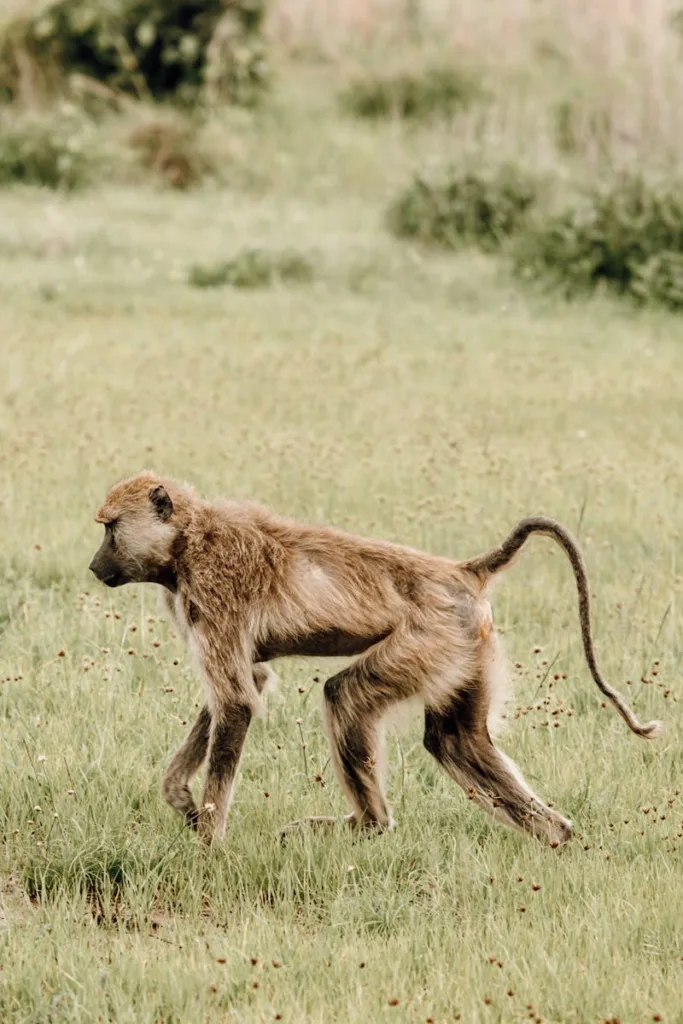Table of Contents
Why humans no longer have tails has been revealed by scientists.
We lost our tails because of an evolutionary split that happened between monkeys and our ancestors, the ape and human progenitors, some 25 million years ago. But up until today, the genetic mutation that caused this profound change has remained elusive.
The elimination of ancestral tails has been connected to a distinct DNA mutation, according to a recent study published in Nature. The TBXT gene, which regulates tail length in animals with tails, is home to this mutation.
Bo Xia, the study’s senior author and a former graduate student at New York University who is currently a research investigator at the Broad Institute, suffered a tailbone injury and developed an interest in the structure’s evolutionary history that led to this amazing discovery.
Senior author of the study and scientific director of NYU Langone Health’s Applied Bioinformatics Laboratories Itai Yanai commended Xia for her unique viewpoint, saying, “Bo is really a genius because he looked at something that thousands of people, at least, must have looked at before. — but he saw something different.”

Animal evolution is driven by genetic changes that occur over millions of years and can range from minor adjustments to more complex modifications. Alu elements, repeated DNA sequences specific to primates, are one such mechanism via which variability can be introduced by means of genome-wide insertion.
In the most recent investigation, scientists discovered two Alu elements in the TBXT gene that are unique to great apes and not present in monkeys. It’s interesting that these components are found in introns, which are the regions of DNA that surround exons and were previously thought to be non-functional “dark matter.” On the other hand, the repetitiveness of Alu sequences makes them bind together when the TBXT gene generates RNA, which leads to the loss of a whole exon during RNA splicing.
The loss of tails in mice exposed to experiments involving the introduction of these Alu elements mirrored the evolutionary changes seen in humans and primates. Significantly, this research lends credence to the theory that the evolution of bipedalism in humans—a vital adaptation—was aided by the loss of the tail.
Additionally, spina bifida, a neural tube disease, was more common in mice with shortened tails, providing insight into possible side effects of TBXT deficiency.
Yanai said, “We’re walking on two feet,” expressing surprise at the discovery’s broad ramifications. And from merely a self-centered element hopping into a gene’s intron, humans developed a large brain and the ability to use technology. I find it remarkable.”

Since different splicing methods may be responsible for different evolutionary changes in features, this ground-breaking discovery not only broadens our understanding of evolutionary biology but also creates new opportunities for genomic research.
you may also like : Bats are undergoing a rare evolutionary event 2024
Additionally, spina bifida, a neural tube disease, was more common in mice with shortened tails, providing insight into possible side effects of TBXT deficiency.
Yanai said, “We’re walking on two feet,” expressing surprise at the discovery’s broad ramifications. And from merely a self-centered element hopping into a gene’s intron, humans developed a large brain and the ability to use technology. I find it remarkable.”
Additionally, spina bifida, a neural tube disease, was more common in mice with shortened tails, providing insight into possible side effects of TBXT deficiency.
Yanai said, “We’re walking on two feet,” expressing surprise at the discovery’s broad ramifications. And from merely a self-centered element hopping into a gene’s intron, humans developed a large brain and the ability to use technology. I find it remarkable.”
The loss of tails in mice exposed to experiments involving the introduction of these Alu elements mirrored the evolutionary changes seen in humans and primates. Significantly, this research lends credence to the theory that the evolution of bipedalism in humans—a vital adaptation—was aided by the loss of the tail.
The loss of tails in mice exposed to experiments involving the introduction of these Alu elements mirrored the evolutionary changes seen in humans and primates. Significantly, this research lends credence to the theory that the evolution of bipedalism in humans—a vital adaptation—was aided by the loss of the tail.
The loss of tails in mice exposed to experiments involving the introduction of these Alu elements mirrored the evolutionary changes seen in humans and primates. Significantly, this research lends credence to the theory that the evolution of bipedalism in humans—a vital adaptation—was aided by the loss of the tail.
The loss of tails in mice exposed to experiments involving the introduction of these Alu elements mirrored the evolutionary changes seen in humans and primates. Significantly, this research lends credence to the theory that the evolution of bipedalism in humans—a vital adaptation—was aided by the loss of the tail.
The loss of tails in mice exposed to experiments involving the introduction of these Alu elements mirrored the evolutionary changes seen in humans and primates. Significantly, this research lends credence to the theory that the evolution of bipedalism in humans—a vital adaptation—was aided by the loss of the tail.
The loss of tails in mice exposed to experiments involving the introduction of these Alu elements mirrored the evolutionary changes seen in humans and primates. Significantly, this research lends credence to the theory that the evolution of bipedalism in humans—a vital adaptation—was aided by the loss of the tail.
The loss of tails in mice exposed to experiments involving the introduction of these Alu elements mirrored the evolutionary changes seen in humans and primates. Significantly, this research lends credence to the theory that the evolution of bipedalism in humans—a vital adaptation—was aided by the loss of the tail.
The loss of tails in mice exposed to experiments involving the introduction of these Alu elements mirrored the evolutionary changes seen in humans and primates. Significantly, this research lends credence to the theory that the evolution of bipedalism in humans—a vital adaptation—was aided by the loss of the tail.
The loss of tails in mice exposed to experiments involving the introduction of these Alu elements mirrored the evolutionary changes seen in humans and primates. Significantly, this research lends credence to the theory that the evolution of bipedalism in humans—a vital adaptation—was aided by the loss of the tail.
Scientists have discovered why humans no longer have tails (msn.com)


1 thought on “Researchers have found out why humans no longer have tails 2024.”